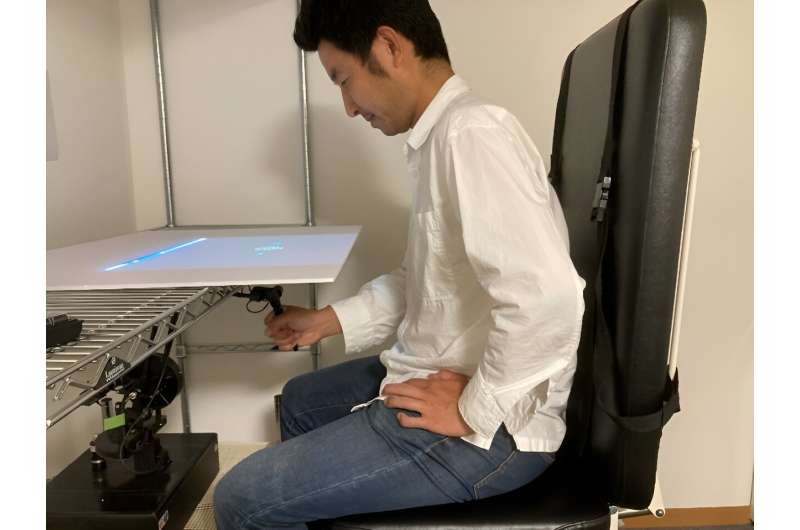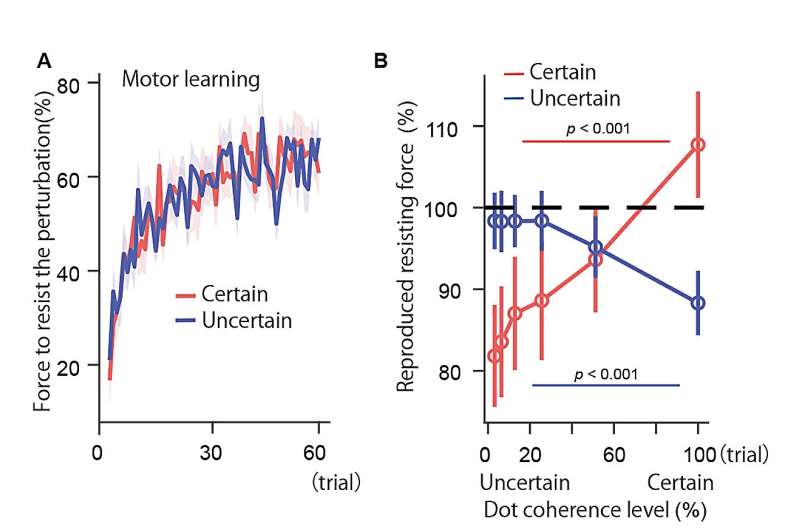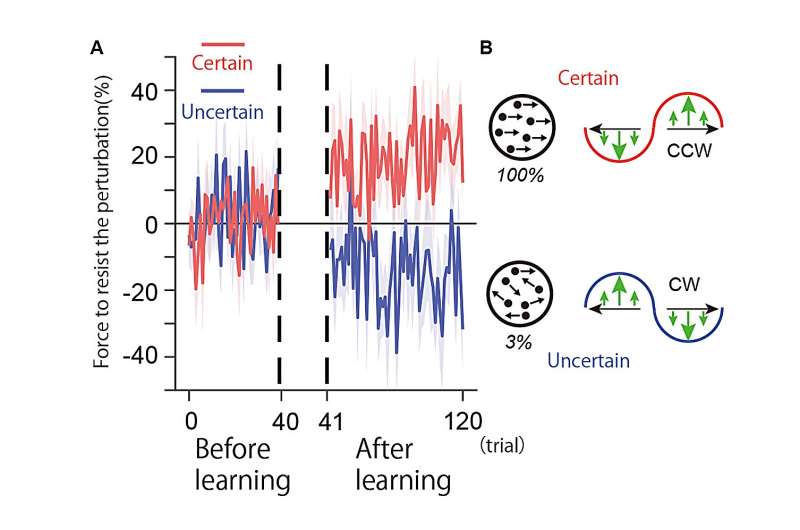A study published in the journal Nature Human Behaviour challenges the belief that identical physical actions are governed by the same motor memory, regardless of the decision-making process involved. Researchers from the National Institute of Information and Communications Technology (NICT) and HONDA R&D Co., Ltd. have discovered that the brain differentiates and stores motor memories based on the level of uncertainty experienced during decision-making.
In a football (soccer) penalty shootout, a player may decide to confidently kick the ball to the right corner upon observing the goalkeeper moving in the opposite direction. Alternatively, the player might make the same kick while being unsure about the goalkeeper’s movement.
Although the physical action—kicking the ball to the right—is identical in both scenarios, this new study reveals that the brain tags these actions differently based on the decision uncertainty involved. This discovery suggests that motor memories are not simply repetitions of the same action but are influenced by the cognitive processes leading up to them.
“This was a very surprising finding. This tells us that we cannot treat actions as something totally independent from the cognitive process. Both are combined to make the representation of action,” says Hagura Nobuhiro, a senior author of the paper.
This research opens up new avenues for developing novel training methods in sports. By associating skill training with various decision-making situations, athletes can enhance their performance by refining their motor memories in context-specific scenarios.

In the study, human volunteers decided whether a cloud of dots presented on a screen was moving to the left or to the right. They held a robotic handle in their right hand and moved the handle towards the target in the direction of their decision. The uncertainty of the decision was modulated by changing the coherence level of the dots’ motion.
When all the dots were moving to the left or to the right (100% coherent motion), the certainty of the decision was high. When only a small proportion of the dots were coherently moving and the other dots were moving in random directions, the situation was uncertain. Participants’ hand movement to express the decision was pushed by the robotic handle to deviate from the straight path, and under this perturbation, participants were instructed to make a straight movement by resisting the force.
In one of the experiments, participants were divided into two groups: the Certain Decision group and the Uncertain Decision group. The Certain Decision group learned to make a straight movement only after deciding on a high dot coherence level motion (100%). The Uncertain Decision group learned the same action, but only after deciding on a low coherence level motion (3%).

Although both groups of participants successfully learned to make a straight movement in their respective decision contexts (certain or uncertain), their performance level dropped when they were asked to perform the same movement after decisions with different uncertainty levels (different motion coherence levels).
Participants in the Certain group could resist perturbation at the same level as during their practice after a certain decision, but not after an uncertain decision. Similarly, participants in the Uncertain group could perform well after an uncertain decision, but not after a certain decision. This indicates that decision and action are not independent; action is learned in association with the decision that led to the action.
In the other experiment, different types of perturbation (clockwise [CW] direction and counterclockwise [CCW] direction) were each associated with a different decision uncertainty level. If the decision uncertainty level did not differentiate the actions that followed the decision, participants would not be able to learn the two perturbations at the same time, since they would interfere with each other. However, if the decision uncertainty level “tagged” the action, participants would be able to learn the two perturbations simultaneously.

Participants were indeed able to learn the two perturbations at the same time, demonstrating that the actions following certain and uncertain decisions are treated as different things in the brain.
The researchers believe that this finding may open up new avenues for developing novel training methods in sports. By associating skill training with various decision-making situations, athletes can enhance their performance by refining their motor memories in context-specific scenarios.
More information:
Kisho Ogasa et al, Decision uncertainty as a context for motor memory, Nature Human Behaviour (2024). DOI: 10.1038/s41562-024-01911-x
Provided by
National Institute of Information and Communications Technology (NICT)
Citation:
Study finds brain stores motor memories differently based on decision uncertainty (2024, July 3)
retrieved 3 July 2024
from https://medicalxpress.com/news/2024-07-brain-motor-memories-differently-based.html
This document is subject to copyright. Apart from any fair dealing for the purpose of private study or research, no
part may be reproduced without the written permission. The content is provided for information purposes only.

